Project Subtitle:
Project Description:
The renovated Bennington Superior Courthouse and State Office Building is now one of the healthiest and most energy efficient buildings in the state of Vermont. The vision for the project focused on the development of a healthy indoor work environment for state employees and a high-performing, energy-efficient building. The building addition was sited to improve the building orientation for energy and site connections, to create a more welcoming entry experience, to simplify courtroom circulation and operations and to minimize internal building volume. Lobby spaces and large public circulation corridors are located to the south to take advantage of the views to the nearby Bennington monument and minimize east and west glazing. With a competitive cost per square foot, and actual energy intensity numbers at only 26 kBtu/SF-yr, this building meets net-zero ready energy standards on a competitive budget.
Building Type Summary:
Other Awards:
2013 - Vermont's Greenest Commercial Building
LEED-Gold 2014
Address:
Elevation:
Lat. / Long.:
Location Type:
Köppen Climate Type:
Climate Region:
Solar Insolation:
Annual HDD :
Annual CDD:
HDD Base Temp:
CDD Base Temp:
Occupancy Type and Details:
161 employees, plus 4 courtrooms and two large waiting areas.
Multiple buildings?:
Total floor area of project (all buildings):
Historic?:
Completion date:
Site description:
The site consisted of an existing one-story building with a three-story section tied to a one-story addition with adjacent parking. The new site plan parking is broken into small areas and is interspersed with vegetation and pathways. Irrigation free landscaping reduces the buiding’s water consumption.
Materials:
All mechanical systems and controls were designed to optimize indoor air quality, an important keystone to this project. Environmental standards for indoor air quality were determined at the beginning and maintained throughout design and construction. Polished concrete flooring in office areas minimizes the collection of dust and allergens, while low or no-VOC emitting stains, paints and adhesives reduce off-gassing. Rigorous air quality testing following EPA protocol demonstrated that containment concentrations were well below allowable levels. Additionally, when construction was complete, a prolonged ventilation flushout was conducted in conformance with LEED standards, further ensuring optimum indoor air quality levels were achieved.
Low flow sinks, toilets and urinals contribute to a projected 40 percent reduction in potable water consumption compared to an average building. A solar hot water system is projected to supply over half of all the hot water needs for the building.
Energy Highlights:
The Bennington Superior Courthouse and State Office Building achieves a net-zero ready design, with a minimum 13% rate of return on energy investments. Measured energy use confirmed a 78% reduction in energy consumption over the existing facility and a 40% reduction in energy over a similar code compliant building. The energy intensity has been reduced from 110 kBtu/sf-yr in the existing building, to 26 kBtu/sf-yr, saving the state $180,000 in annual energy costs the first year. The building is one of the best performing state office buildings. It uses no fossil fuel combustion on-site for space heating or cooling and only a very small amount of propane for backup heating domestic hot water (after the solar thermal system). Heating and cooling are provided with a ground source heat pump.
LCA Description:
In the selection of materials, life-cycle costs and proximity of production and/or extraction sites were carefully considered. As much as reasonable, Vermont materials were incorporated, including Vermont manufactured brick; locally quarried marble sills, lintels and accent band;, and locally quarried slate flooring for public corridors and lobbies. Additionally, more than half of the wood-based materials used for the project are Forest Stewardship Council (FSC) certified.
Datasets and Utility Bills sources and reliability:
The State of Vermont
Electricity amount (imported from grid):
Subslab assembly:
Retrofit - 3" new EPS insulation
New - 4" EPS insulation
Slab edge assembly:
4" EPS to 36" deep
Above grade wall assembly:
4" polyiso rigid insulation
Space heating - Manufacturer & Model:
Domestic hot water - Manufacturer & Model:
Ventilation - Manufacturer & Model:
Process:
Maclay Architects led a team of eight consultants, nine state departments, and various other stakeholders through the design and planning of this project. At the start of the project, a collaborative effort between the architect, the commissioning agent, the mechanical engineer, and the owner identified the Owner’s Project Requirements for the project. Subsequently, meetings with stakeholders and state department leaders established the program and required adjacencies for the building. Once the building program, functional adjacencies, and Owner’s Project Requirements were understood and agreed upon, the design team was able to use these tools to help guide the decision making process, This clarity helped the large team execute a complicated design in a relatively short time frame.
Special architectural measures:
The existing Bennington Superior Courthouse and State Office Building was composed of an original one-story building with a three-story section tied to a one-story addition. Initially, the state planned to renovate both portions of the building. However, during programming, it became evident that the existing single story building did not function well for courtroom or energy purposes, and it created an unattractive and unwelcoming entrance. More specifically, this massing created conflicts with courtroom circulation and security. It also was oriented to maximize east and west windows causing potential daylighting and overheating conflicts as well as maximizing the exterior surface area of the building causing energy and budget issues.
Daylighting and artificial lighting systems were carefully integrated into the design for maximum user satisfaction and energy savings. To create inviting and pleasing spaces for the public, lobbies and corridors were located on the south side of the building, decreasing the need for artificial lighting in these spaces. All east, south and west facing windows in occupied spaces include glare-controlling, light-filtering blinds to ensure comfort for building occupants. South-facing transom windows are designed into many occupied spaces, utilizing light-guiding blinds to reflect daylight deep into the building’s interior. Exterior sun shades are located on the south and west facades of the building to reduce unwanted summer solar heat gain. This building uses an open loop, daylight harvesting system, which automatically adjusts the artificial lighting levels in many of the offices, conference rooms, and courtrooms, depending on the availability of daylight.
Low flow sinks, toilets and urinals contribute to a projected 40 percent reduction in potable water consumption compared to an average building. A solar hot water system is projected to supply over half of all the hot water needs for the building.
The design team offered multiple design alternatives with costing to resolve these issues. Through this process the state decided to tear down the one-story section of the building and locate a three-story addition oriented directly south. This solution lowered the surface area to volume ratio (thereby reducing heating and cooling loads), improved the efficiency of court operations, improved daylighting opportunities, improved employee and public connections to the site, and improved the public entry experience. In addition this option was less expensive than the preliminary design options. For these reasons, the state decided to pursue this path.
Energy Strategies:
The electricity meter associated with the Bennington Courthouse and State Office Building will be in a group net-metering agreement, offset by a 500kW solar installation in Charlotte, VT to be constructed in 2016.
Energy Use and Production Documentation:
Subslab R-value:
Slab edge R-value:
Above grade wall R-value:
Average window U-factor:
Solar Heat Gain Coefficient:
Visible Light Transmittance:
Project Photos:
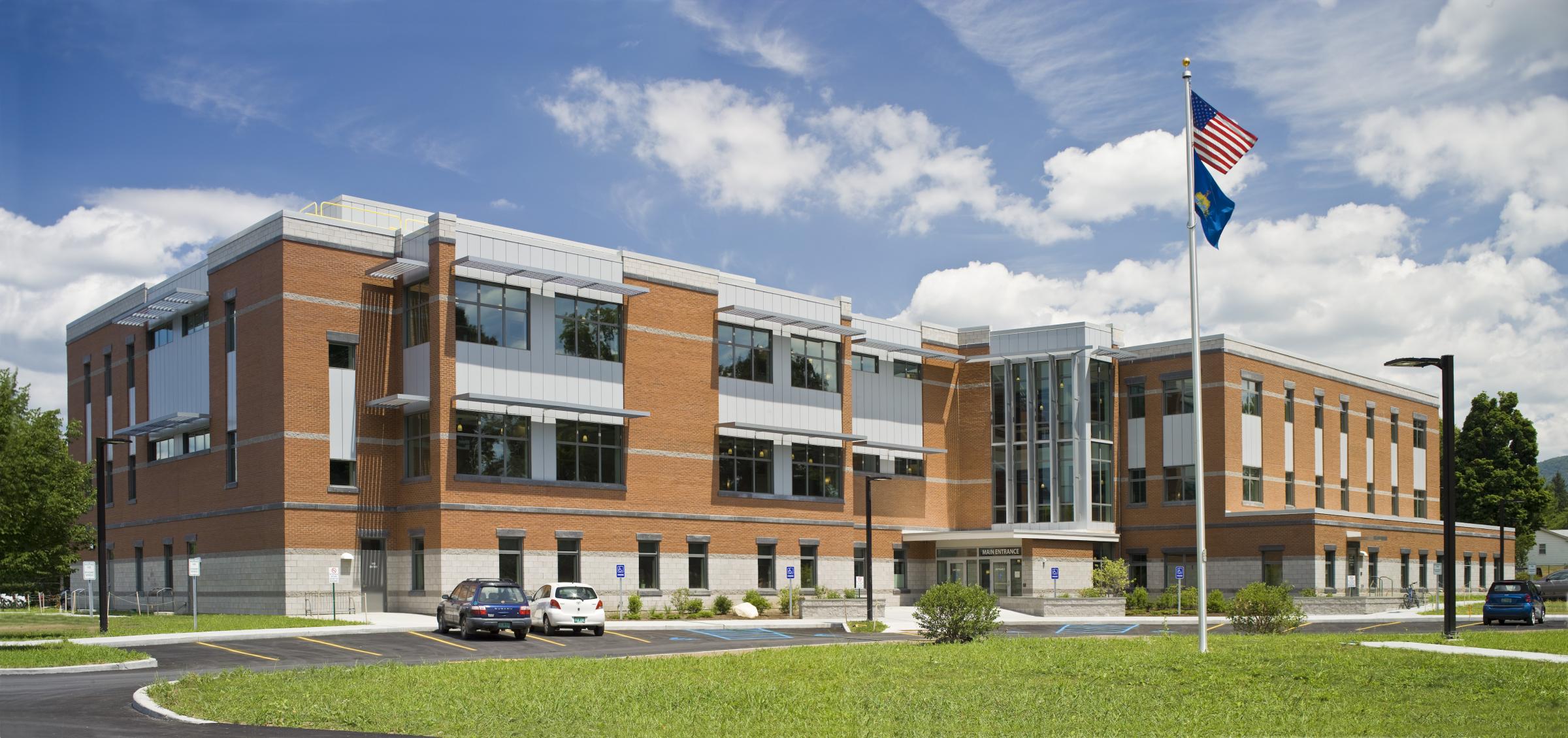
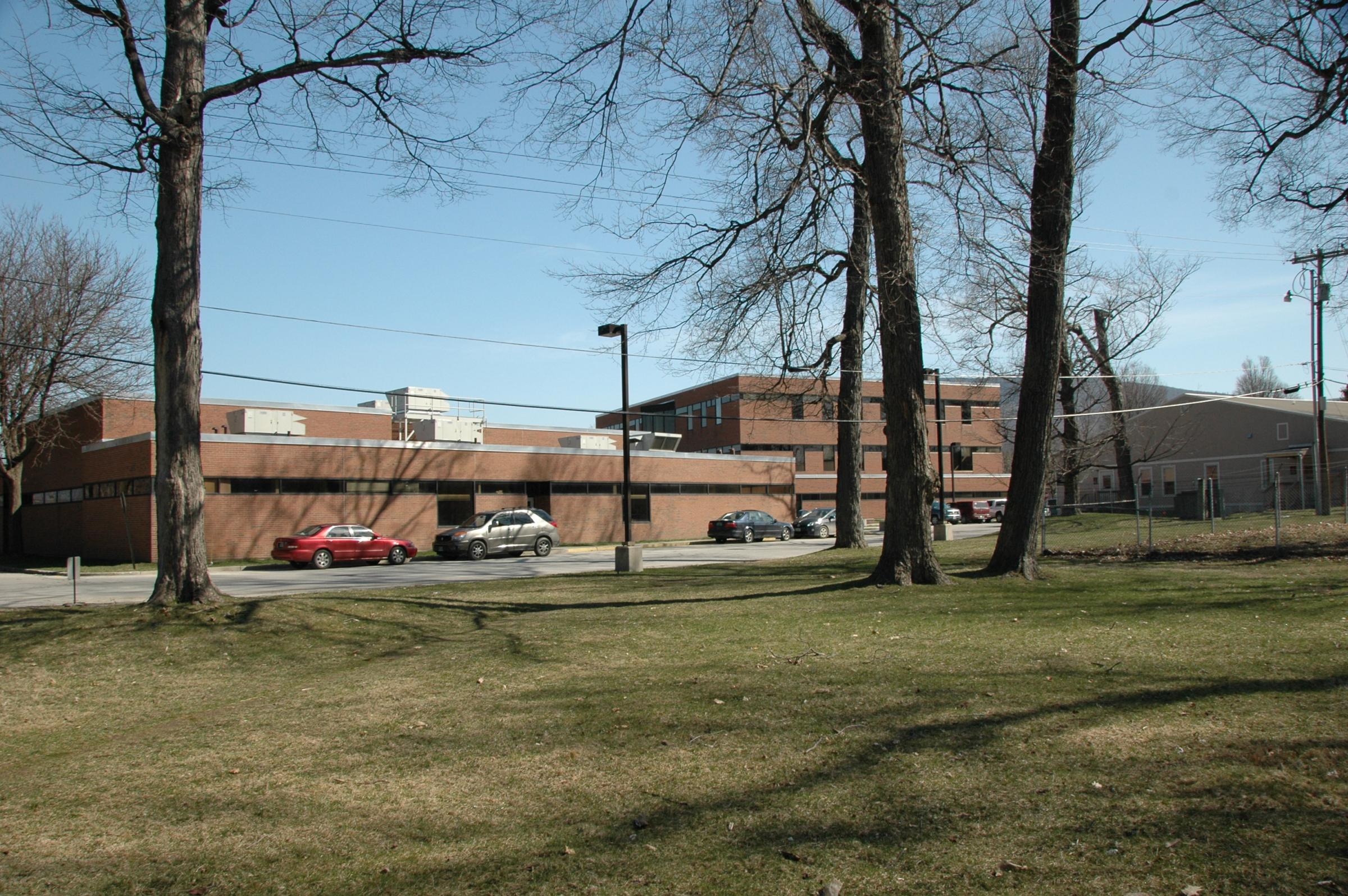
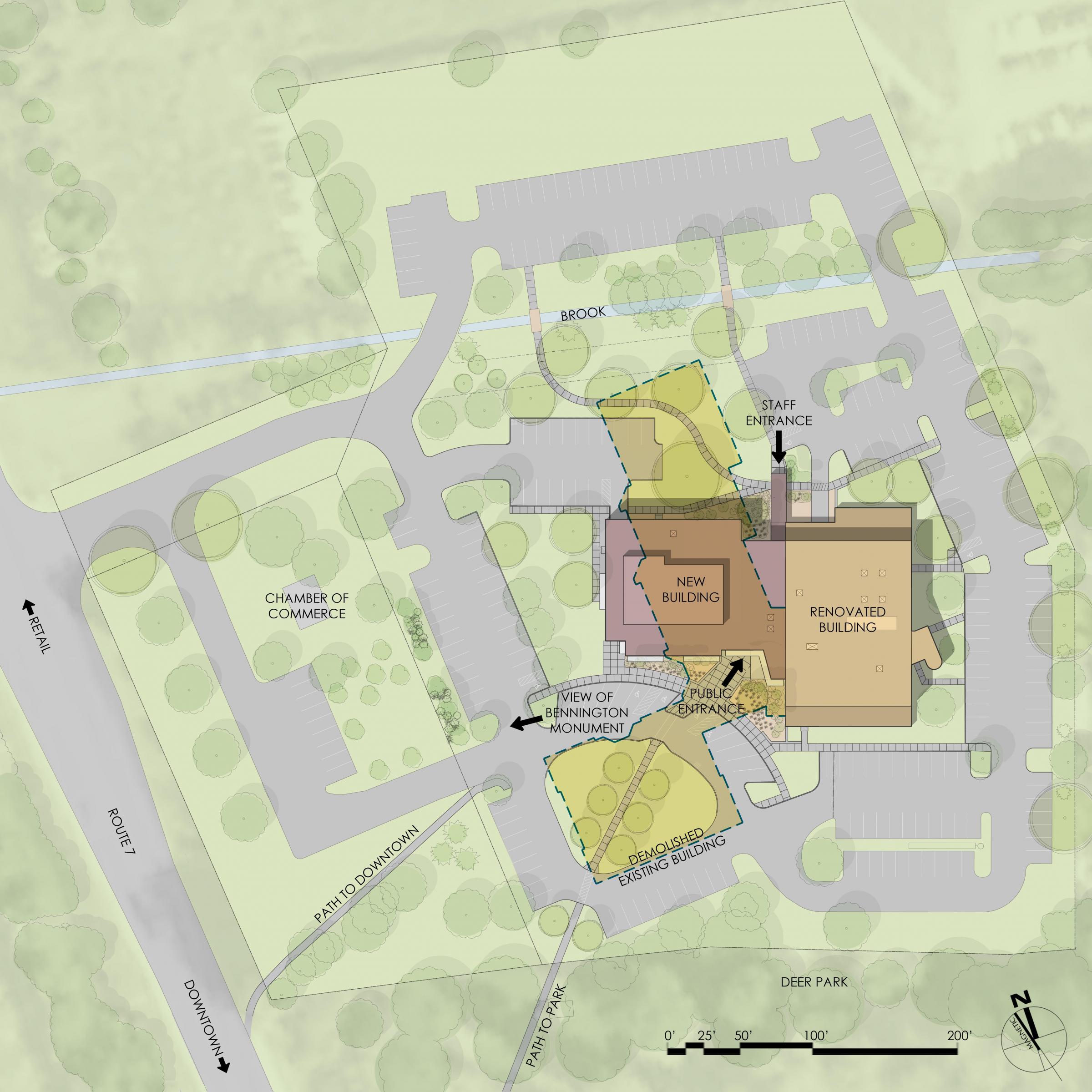
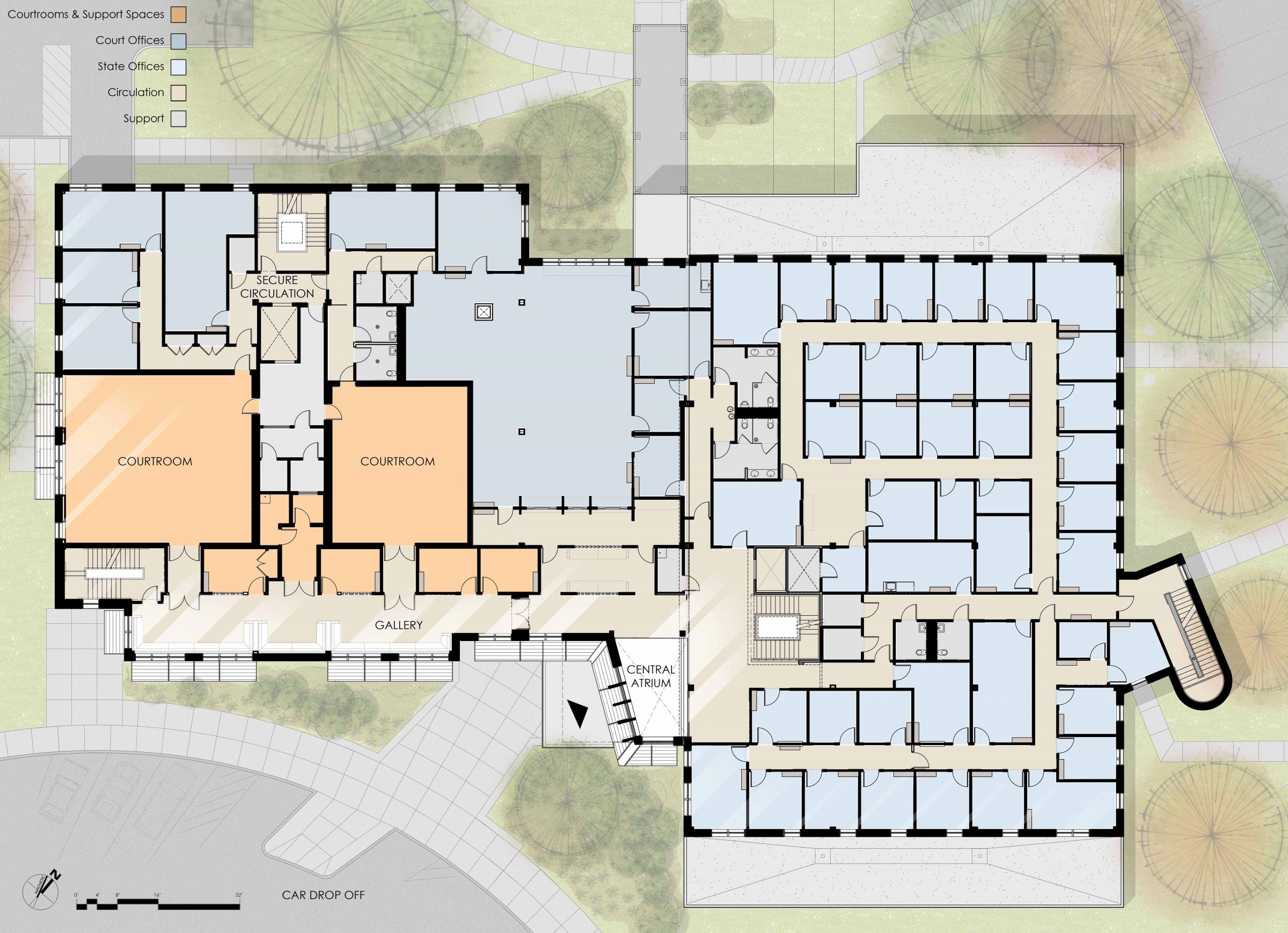
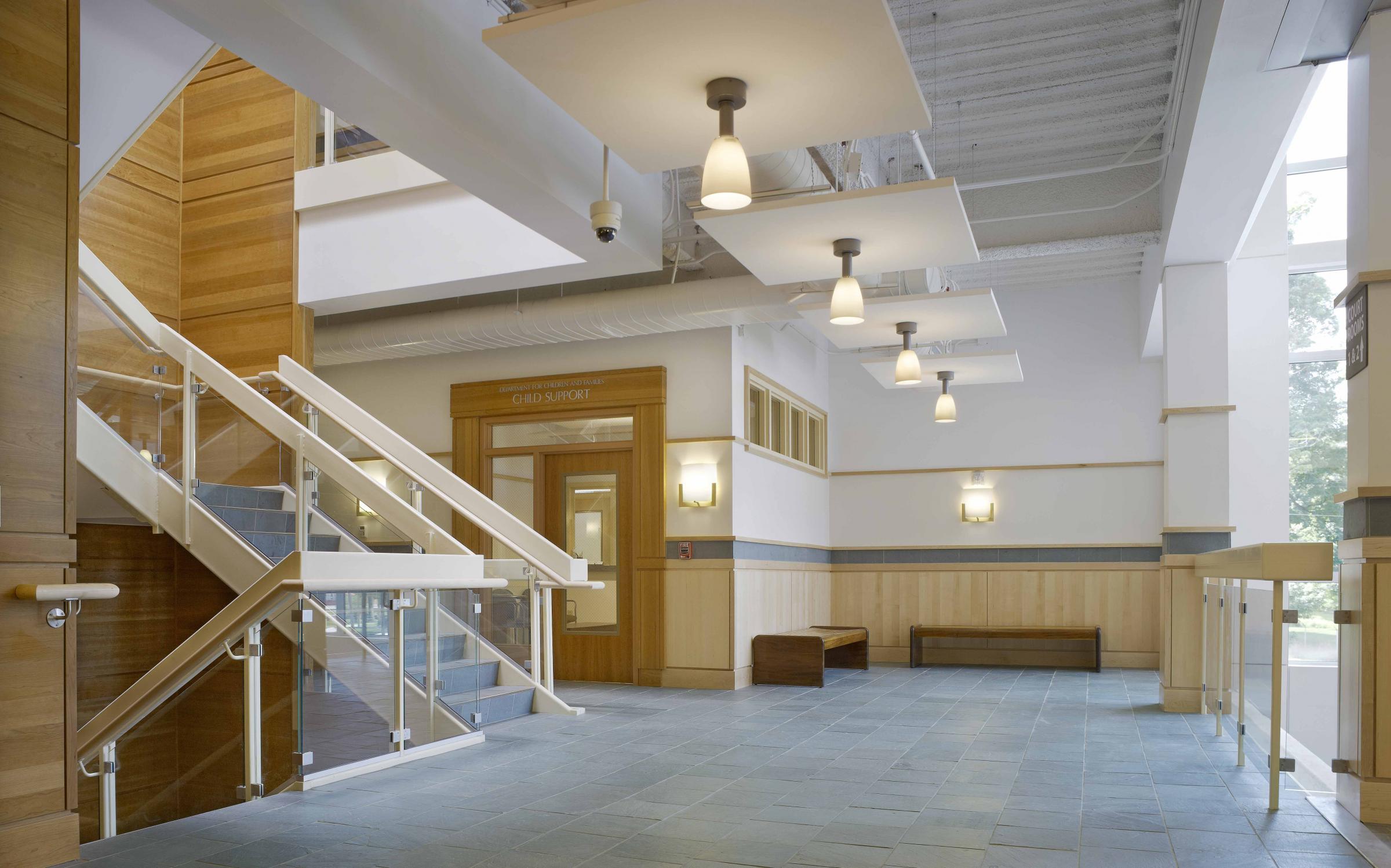
Scope Description:
A leading project goal was to create a model, productive and inspiring workplace by producing optimized indoor air quality through ventilation, building science, materials selection and elimination of nearly all fossil fuel combustion; increasing the views to the natural world; and enhancing daylighting. High environmental goals lead this project to achieve a LEED Gold rating.
Another goal was to establish the State of Vermont as a leader in net-zero ready energy performance, and to demonstrate that deep energy retrofits can transform poor energy performing buildings into net-zero ready standards within budgets set for code compliant construction.
And, of course, the renovation needed to provide functional, safe, secure and pleasant state of the art court space for the public and staff—and to exemplify prudent, long-term investment in capital, energy and maintenance costs. The project scope included renovation and reconstruction of the 65,000 sf state office buildings, court rooms, and large public waiting areas.
Site conditions:
Other Purchased Fuels Description:
Propane ~1,000 gal/ year for DHW not produced by the solar thermal system.
Summary of enclosure strategy/description:
During the schematic design phase, the team investigated several levels of thermal performance. Wall and roof system options were evaluated based on expected energy performance, initial construction cost and long-term operating costs. Three alternatives for wall construction were analyzed for performance and capital and operating costs.
• Leave the existing exterior brick in place and insulating from the inside by using spray foam behind the existing veneer.
• Demolish the existing exterior brick and insulate from the outside using rigid foam, plus installing a new metal panel rain screen.
• Demolish the existing, exterior brick and insulate from the outside using rigid foam, plus installing a new ventilated brick-veneer rain screen.
The design team investigated each of these wall options with multiple levels of insulation. Comparing the potential return on investment for each of the options, it was determined that the optimum value was achieved by demolishing the existing brick and installing 4” of polyisocyanurate board insulation under a combined brick-veneer and metal-panel rain screen wall assembly.
In addition to the high thermal performance achieved by the wall assembly, a combined air/moisture/vapor barrier was applied continuously over the entire building envelope. This spray-applied barrier combined with membrane layers, used at corners and non-adhesive surfaces, was specifically detailed to ensure that the resulting building would be one of the tightest commercial buildings in Vermont. In final blower door testing the building reached a result of 0.11 cfm50/square foot exterior surface area, which put this building in the top 10 percent of buildings tested in Vermont.
Roof Assembly:
Retrofit - 6" new polyiso and 4.5" existing polyiso
New - 9" polyiso
Roof R-value:
Window Description:
Accurate Dorwin triple pane windows. Wasco skylights in the offices U 0.1, SHGC 0.54, VT 0.5
Project Team:
Team Member:
Team Member:
Team Members:
Owner's Team Buildings and General Services, State of Vermont
Design Team
Architect Maclay Architects
Court Architect RicciGreene Associates
Energy Consultant Energy Balance, Inc.
Cost Consultant DEW Construction, Inc.
Structural Engineer Engineering Ventures
Mechanical Engineer Kohler & Lewis
Civil Engineer Engineering Ventures
Electrical/Lighting Engineer EDM-AE Services
Landscape Architect Cynthia Knauf Landscape Design Inc.
Geothermal Consultant Haley and Aldrich, Inc.
Commissioning Agent Cx-Associates
FP Engineer Chase Enginneering
Construction Team DEW Construction, Inc.

Mechanical Equipment Installation Details and Comments:
Full building mechanical commissioning by Cx Associates.